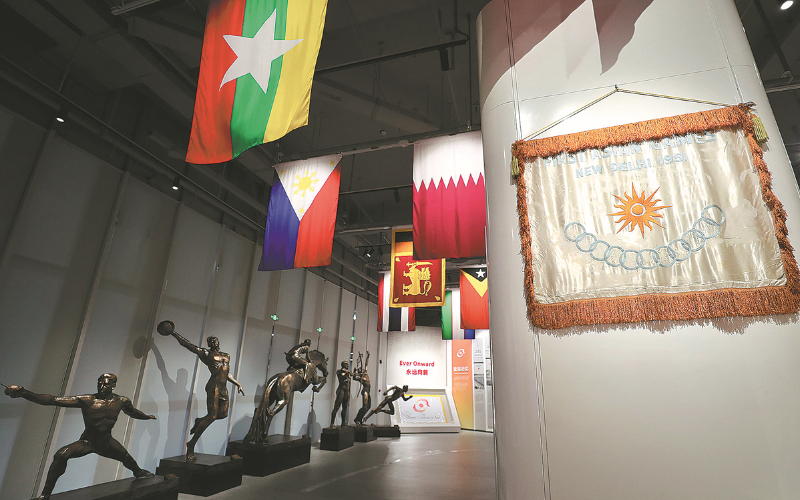A place to remember

The Hangzhou Asian Games Museum provides the entirety of the 19th Asiad's legacy, especially its icons, such as the emblem, medals, mascots and torches. It also preserves the Games' memory, featuring photos of the gold-medal winners from previous Asiads. ZHANG WEI/CHINA DAILY
The Hangzhou Asian Games Museum celebrates the 19th Asiad's legacy
Visitors to the Hangzhou Asian Games Museum can immerse themselves in the entirety of the 19th Asiad's legacy and especially its icons, like the emblem, medals, mascots and torches.
The roughly 5,400-square-meter museum features three exhibition halls with the themes: "The Asian Games and Hangzhou", "The Asian Games and Asia", and "The Asian Games and the Future."
The Olympic Council of Asia's acting president, Raja Randhir Singh, visited the museum during its opening ceremony on Sept 28.
He praised the Hangzhou Asian Games Organizing Committee's work to preserve the Games' memory and was, in particular, visibly excited to see photos of the gold medalists of previous Asiads. This prompted him to pull out his phone and show his copy of the displayed photo of his own historic gold at the Games in Bangkok, Thailand, in 1978, the first Asiad in which India competed.
"In the blink of an eye, 45 years have already passed," he said, with a palpable sense of nostalgia.
Also on display are 18 torches from previous Games editions that the OCA donated.
The first Chinese athlete to clinch gold at an Asiad and former member of the national shooting team, Su Zhibo, donated his participation badge from the seventh Asian Games, which was hosted by Tehran, Iran, in 1974.
"The museum skillfully combines historical and contemporary perspectives," said Su, who presented the donation in person.
"The evolution of sports equipment mirrors the rapid development and prosperity of our country. As our nation grows stronger, so does our sporting prowess."
The museum organized a special exhibition to commemorate the 1974 Games, including items related to Chinese athletes' participation, that also uses AI-generated imagery to recreate scenes from that Asiad.
International donations beyond sporting competition include six handicrafts from the Malaysian delegation that hail from various regions and ethnic groups in the country, including a woven-rattan ball used for the sport sepak takraw and pinakol necklaces.
Malaysia delegation head Dato Chong Kim Fatt said these are intended to not only display his nation's diversity, but also its commitment to the Asian Games spirit.
"Similarly, sports embody the same values as handicrafts — dedication, perseverance and the pursuit of excellence," he said.
"Athletes constantly challenge themselves, much like craftspeople continually refine their skills."
Chong, who is also the Malaysian Olympic Committee's vice-president, added that his country had contributed other items to the museum, including Team Malaysia's official uniform.
HAGOC executive office deputy director Chen Shengjian called the museum's opening a "crucial responsibility" of preparations to host the Games.
He explained the first principle of curation was to prioritize tangible exhibits of such items as sports equipment. Some displays will later be swapped for those used in the 19th Asiad, such as the soccer ball used in the finals. The museum will also feature interactive elements, he added.
It's the first Asian Games museum to open before the event's official start, Chen pointed out. It welcomed over 450 groups of more than 13,000 people before the Asiad began and continues to serve athletes, officials and media personnel attending the Games.
Throughout the Asian Para Games, the Hangzhou Disabled Persons' Federation will host an exhibition of photos by people with disabilities at the venue, he said.


